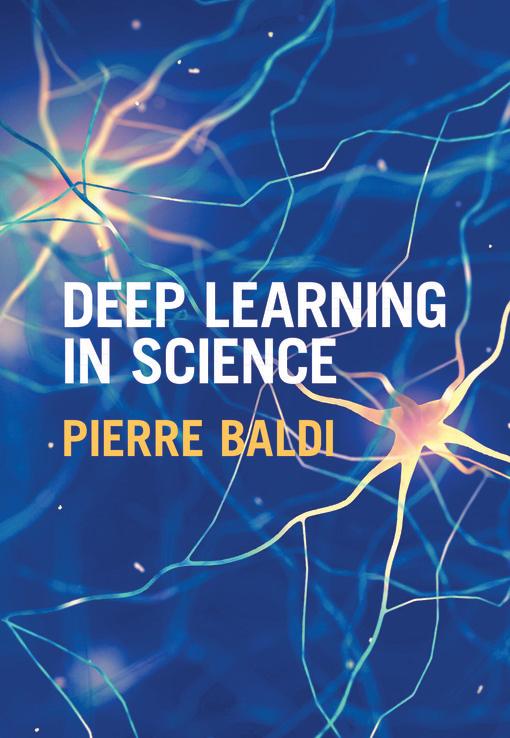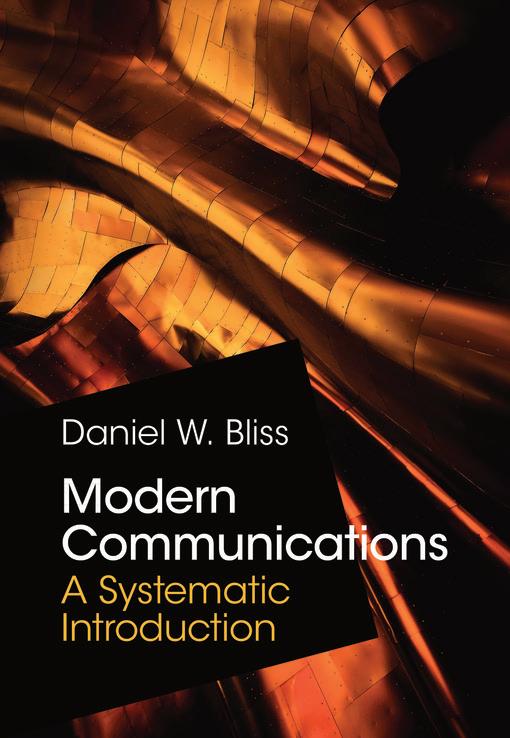
4 minute read
Engineering
Deep Learning in Science
Pierre Baldi
University of California, Irvine
Description
This is the first rigorous, self-contained treatment of the theory of deep learning. Starting with the foundations of the theory and building it up, this is essential reading for any scientists, instructors, and students interested in artificial intelligence and deep learning. It provides guidance on how to think about scientific questions, and leads readers through the history of the field and its fundamental connections to neuroscience. The author discusses many applications to beautiful problems in the natural sciences, in physics, chemistry, and biomedicine. Examples include the search for exotic particles and dark matter in experimental physics, the prediction of molecular properties and reaction outcomes in chemistry, and the prediction of protein structures and the diagnostic analysis of biomedical images in the natural sciences. The text is accompanied by a full set of exercises at different difficulty levels and encourages out-of-the-box thinking.
Key Features
• Contains a full set of exercises of varying difficulty, suitable for use by instructors or for self-study • Makes the theory accessible to readers without specialized training in deep learning • Discusses a wide variety of applications to the natural sciences
Contents
1. Introduction; 2. Basic Concepts; 3. Shallow Networks and Shallow Learning; 4. Two-Layer Networks and Universal Approximation; 5. Autoencoders; 6. Deep Networks and Backpropagation; 7. The Local Learning Principle; 8. The Deep Learning Channel; 9. Recurrent Networks; 10. Recursive Networks; 11. Applications in Physics; 12. Applications in Chemistry; 13. Applications in Biology and Medicine; 14. Conclusion; Appendix A. Reinforcement Learning and Deep Reinforcement Learning; Appendix B. Hints and Remarks for Selected Exercises; References; Index.
Additional Information
Level: Graduate students, academic researchers
July 2021 244 x 170 mm c.450pp 978-1-108-84535-9 Hardback £49.99 / US$64.99
Modern Communications
A Systematic Introduction
Daniel W. Bliss
Arizona State University
Description
Designed for a single-semester course, this concise and approachable text covers all of the essential concepts needed to understand modern communications systems. Balancing theory with practical implementation, it presents key ideas as a chain of functions for a transmitter and receiver, covering topics such as amplification, up- and down-conversion, modulation, dispersive channel compensation, error-correcting codes, acquisition, multiple-antenna and multiple-input multiple-output antenna techniques, and higher level communications functions. Analog modulations are also presented, and all of the basic and advanced mathematics, statistics, and Fourier theory needed to understand the concepts covered is included. Supported online with PowerPoint slides, a solutions manual, and additional MATLAB-based simulation problems, it is ideal for a first course in communications for senior undergraduate and graduate students.

Key Features
• Concise and approachable, covering the essential topics needed for a single semester class, such as systems concepts, basic theory, algorithms, hardware concepts, waveform design • Organized on the basis of functional transmitter-receiver chains so that students build their understanding in a practically useful, system-based order • Supported online with PowerPoint slides, a solutions manual, and additional MATLAB-based simulation problems • Solutions, lectuire slides, Mathematica/Python/Matlab lab exercises, video tutorials
Contents
Preface; Part I. Communications Systems: 1. Notation; 2. Basic radio; 3. Fundamental limits on communications; 4. Amplifiers and noise; 5. Up- and down-conversion; 6. Modulation and demodulation; 7. Dispersive channels; 8. Error-correcting codes;
9. Acquisition and synchronization; 10. Radio duplex, access, and networks; 11. Multiple-antenna and multiple-Input multiple-output communications; 12. Analog radio systems; Part II. Mathematical Background: 13. Useful mathematics; 14. Probability and statistics; 15. Fourier analysis; References; Index. Additional Resources: http://www.cambridge.org/9781108833431 PPTs and JPEGs of figures and tables, PowerPoint slides, solutions manual, additional MATLAB-based simulation problems
Additional Information
Courses: Introduction to Communications, Communications Theory, Communications Systems Departments: Electrical and Computer Engineering, Electrical Engineering and Computer Science, Electrical Engineering Level: Undergraduate students
July 2021 229 x 152 mm 288pp 150 b/w illus. 978-1-108-83343-1 Hardback £69.99 / US$89.99
The Right to Repair
Reclaiming the Things We Own
Aaron Perzanowski
Case Western Reserve University, Ohio
Description
In recent decades, companies around the world have deployed an arsenal of tools-including IP law, hardware design, software restrictions, pricing strategies, and marketing messages-to prevent consumers from fixing the things they own. While this strategy has enriched companies almost beyond measure, it has taken billions of dollars out of the pockets of consumers and imposed massive environmental costs on the planet. In The Right to Repair, Aaron Perzanowski analyzes the history of repair to show how we’ve arrived at this moment, when a battle over repair is being waged-largely unnoticed-in courtrooms, legislatures, and administrative agencies. With deft, lucid prose, Perzanowski explains the opaque and complex legal landscape that surrounds the right to repair and shows readers how to fight back.
Key Features
• Reveals the tools firms use to restrict repair, from design and economics to law and social norms • Explains the complex and often opaque legal landscape that defines repair markets • Identifies reforms to law and product design that could promote repair and empower consumers
Contents
Acknowledgements; 1. Introduction; 2. Why repair matters; 3. The history of repair; 4. Breaking repair; 5. Repair and intellectual property; 6. Repair and competition; 7. Repair and consumer protection; 8. Rebuilding repair.
Additional Information
Level: Graduate students, general readers, academic researchers
February 2022 216 x 138 mm c.230pp 978-1-108-83765-1 Hardback c. £85.00 / c. US$110.00











